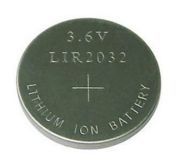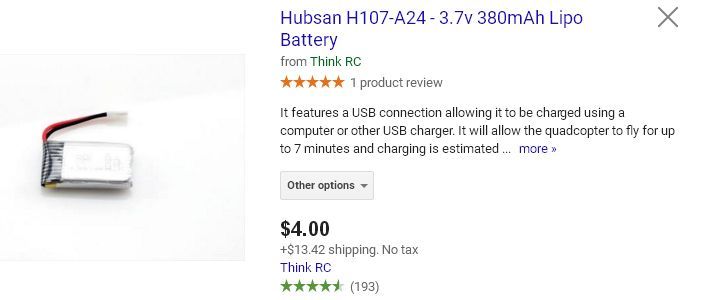Now when raspberry pi zero w has been launched with Bluetooth and Wi-Fi on board and tagged at $10 wouldn’t it be in the interest of outernet to restart support for raspberry pi. It is just a suggestion. You may have good reasons for using other single board computers.
The biggest drawback I see is the cost, as you still need an SD card. Then you would need a OTG cable to adapt the micro USB to USB type A. So now that system is $10-15 more expensive.
I think the biggest drawback is that they are not available in volume.
Neither are the CHIPs right now.  But I know what you mean.
But I know what you mean.
It is to be expected that once the initiial demand has been satisfied and the production is running
at full capacity, the Pi will have better availability than the Chip. At least this has been true for the
usual credit-card-sized Pi models, I understand that the Pi Zero has had issues with this but they
promise to improve it for the Pi Zero W.
We have used other single board computers in a project, because of some specific advantage of
those boards (audio-input in that case), but in the end we have switched to Raspberry Pi because
of its wide availability and resulting broad support and available knowledge.
As often in computing, going with the mainstream has some small disadvantages that are offset
by huge advantages in availability and support.
Yes, the supply chain issues with CHIP and Pi Zero are exactly why we decided to design or own fully integrated board. We are on the second revision of it right now.
Outernet did this with the previous Ku-band Lighthouse device, and it turned out to be a good choice for all of us. I’d vote to stay tuned and then buy the new board from @Syed Ken
Syed, You mean the CHIP I ordered from The Next Thing will not work? How will your board be different? The reason I ordered from them is I thought they had a good supply. And you said the Outernet Team would rather not send me just the board. Turns out both you and them don’t have any to ship! BTW I ordered a Pi Zero W, just for fun. Adafruit had 57. In a couple of hours they had none! Mine shipped.
No, the CHIP will work. We’re using the same processor (A13/R8). We do have a few CHIPs on hand, which we are happy to sell to our existing customers. We just don’t have regular access to new CHIPs. The A13 we can by through normal distribution channels.
Our board is basically the CHIP and SDRx on the same board. The reason for going down this road was due mostly to supply chain, not new features (though we are taking advantage of the new possibilities).
Just a thought - - you might want to consider including provision for a small Lipo battery to run the board during USB power interruptions. Such as
or maybe a couple of Rechargeable Lithium CR2032 Coin Cell (they hold about 40 mAh each) that you can include on the board.

What I mean is the big Boston Power 5300 is a good battery, but large and heavy. My experience traveling with the Lantern is I need a large enough battery to support the Lantern when I take for “short walks” checking performance, or move it from one AC recepticle to another without having to go thru a shutdown sequence.
Most of the rural communities I have visited all seem to have some sort of power generation capability - - especially the small schools that generally have large solar arrays to power a few computers and recharge people’s SMART phones. Ken
Thanks all,
I do have a couple of Lipo 1200 mAh batteries laying around for use with the CHIP when it gets here.
Syed, I guess we’re all so darn impatient to get the ping-pong ball yesterday! These amazing boards surly are not a ping-pong ball. They help make the pin-pong ball. And a billion times more complicated! So, we have to wait. No problem doing so. I now wish I bought from you guys.
As far as I understood there were interference issues with using the direct-Lipo-to-Chip battery solution
which was why we received the external USB battery in the kit (that cannot deliver power continuously
because it cannot simultaneously be charged and deliver output power).
Why would that situation suddenly change when a special board is developed?
@pe1chl I’m not sure it would change. Thought it’s possible with some routing and shielding, the EMI could be reduced. That’s for @zoltan to work through.
@kenbarbi Why is the same battery chemistry producing two different voltages? Are the CR2032 cells slightly different from lithium polymer and 18650 cells? Why is it 3.6V when the others are 3.7V? I would be concerned about having the AXP209 change that cell if it was not specifically designed for its charging profile.
CR2032 cells are designed for low power draw. Recommended current draw is 4ma, so with the cost of enough cells to run an outernet receiver you could just buy a decent lithium pack. I have been using a 4 cell 18650 pack in my receiver for a month now and have not seen a difference in performance. BTW what happened to battery.sh?
Hi @Syed and @demandzm I was not trying to be technical here because I don’t know the current draw on you new Single Board Device, I was pointing out that a smaller lighter Lipo could do the job in the Single Board Device, if you weren’t concerned about long term non-AC charging operation.
You would still have to do the power calculations to make sure charging/discharging would not become a problem for the board, and the battery selected (as @demandzm pointed out) was large enough. CR2032s could not be stacked high enough to handle (let’s say) a 1 amp load.
On the other hand, if your new board could go into automatic low power hibernation when primary power failed, but not shut down completely, that would be good because you would be spared the reboot process each time you had a power flux. However it would not allow the temporary autonomous operation I like, but I don’t think people need 5 hours of autonomy. Ken
As an ordinary user I would accept the use of chip if 11 million or more are sold. I think the processing hardware should be kept independed and it should be possible to use any ordinary computer laptop, raspberry pi or chip. You can provide the software such that an open source version is available with limited access to information and a paid version with full access to make it easier for people to purchase and use your product. Buying and shipping of your propriety board may hinder a lot in the less privileged world from use. It is an extremely useful product for education that is mostly needed in those countries. Please note that power too is a serious problem in remote areas. If you intend to provide small batteries on board for reducing the weight and size then at least an external port should be provided for attaching a standard power bank to increase the usage in some areas. I do not know if I make sense but my experience with remote areas is pretty bad in this respect. I have a solar powered raspberry pi running continuously for more than a year and it has a back up power for three days in case it goes a dark sky.
Hi @threekay I like your approach. I don’t know your power drain details for your Pi or the wattage of your solar charger, but thinking about the Lantern, I came up with the following:
My Lantern draws 790 mA from my Boston Power 5300 3.7 volt Lipo to run the CHIP, SDR, and LNA when external power is disconnected. CHIP bootup without the SDR/LNA is 600 mA. These numbers came from an in-line amp meter on the Lipo leads.
I can run about 5 hours without external power from a fully charged Lipo which is only 3900 mAh of power from a 5300 mAh Lipo. As the Lipo discharges, the output voltage drops below the CHIP’s operationally acceptable level and shuts down.
That said for example - - for 8 hours of direct sun when the Lantern runs directly off the solar cell, and recharges the Lipo for the 16 hours of darkness, I would need a battery reserve of 16 hours x 790 mA = 12,640 mAh for nighttime operation - - a large battery. No margins here or reserves for the dark rainy days, so I’d probably double the Lipo’s size in practice.
During the 8 hours of sun, I would need solar power on the order of 8 x 790 = 6,320 mAh. So my solar array would have to generate enough energy to do the 8 hour daylight run (6,320 mAh) and provide the recharge of the 12,640 mAh for the 3.7 v Lipo’s nighttime operation.
You would have to calculate the wattage of the solar array to do that based on how you store the solar energy.
Does this sound correct? So if it is correct, I can’t see Outernet building that kind of storage into a single board product that would run at 790 mA, and they would have to throttle down to some other acceptable level. Alternatively they could design a single board that runs at way less power. Ken
The power hogs are the components, so even a custom board can’t overcome those issues.
That is true. Now the question I have is “how big should the internal battery be”?
To answer that, you have to decide how long the device will be disconnected from a charge source. I would opt for short periods to overcome power interruptions, and movements from one ac source to another, but others might disagree.
So what does the community at large think? Ken
I agree with you Ken,
It should be able to be moved from one power source to another without instant death… so even if it had enough internal power to keep it alive for 30 mins or so it would be good.
I do wonder if the internal battery connector on the CHIP could work like that already …
